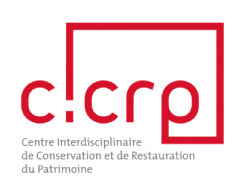Identification and location of organic material in stratigraphic sections using reactive fluorochromes under confocal microscopy
Programme start: 2011
CICRP: Nicolas Bouillon
Partnership(s): Central Microscopy Facility of the University of Provence
Analysis of the constituent organic materials of paints (binders, varnishes, glues) of particular complex character as a result of the small quantity of the available sample and chemical modifications undergone by these materials during the course of ageing. It often involves the use of instrumental techniques that are particularly costly and at times difficult to carry out. The latter yield a very specific profile of the chemical composition of organic matter but only rarely determine its precise location in the stratigraphy of a pictorial layer.
In terms of the transfer of microscopy techniques from the biological and biochemical fields, the CICRP has witnessed, since the 1980s, the development of the use of histochemical techniques applied to the identification of organic material in cultural heritage property. It is in this context that the use of reactive fluorochromes under UV microscopy has expanded for the location and identification of organic material in the sampling of pictorial matter analysed as stratigraphic sections. In the first decade of the 21st century, this application has seen considerable developments with the arrival on the market of new reagents and new specific filters for microscopes, thereby heralding real progress in the effectiveness and accuracy of results.
Since 2009, the CICRP has gradually adapted its photonic microscopy equipment and carried out several testing campaigns on laboratory-manufactured and real samples. In 2011, tests carried out under confocal microscopes demonstrated the strong potential of this application. The work currently in progress consists in the finalisation of confocal microscopy protocols for the observation and interpretation of scientific reactions in organic material in paints. It consists first of all in studying the specificity of their autofluorescence before carrying out tests on fluorescence induced by specific fluorochromes.


